Behind the scenes in a Zoo
- What are the major health issues associated with animals in captivity?
- What are the goals, procedures and outcomes of captive breeding programs?
- How do zoos maintain the mental wellbeing of animals?
- How are human-animal interactions managed?
Learn the answers to these questions and many more with this interactive online course in Zoo Keeping.
ACS Student Comment:
I'm getting positive comments with notes on things I missed, so I think that is helpful. I'm learning a lot about zoo keeping and am able to see its value as I go about my volunteer zoo work. I'm loving the course. Thanks for the opportunity. Jo-Anna Apelt, Australia - Zoo Keeping course.
Learn to be a Zoo Keeper
- Learn animal handling and care; and appreciate the daily tasks that a zoo keeper is involved with
- Improve your prospects for employment or career advancement
- Study how animals are cared for in zoos, and the way zoos are managed
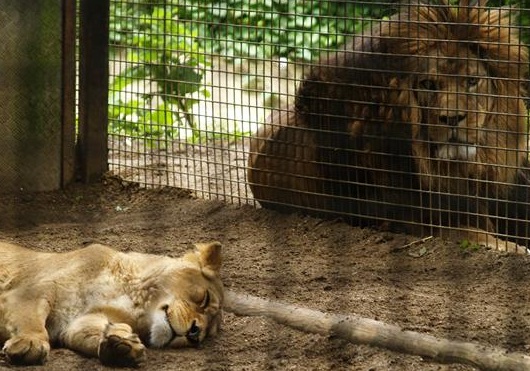
Course Length: 100 hours of self-paced study
Course Structure and Content
There are 9 lessons in this course:
1. The Nature and Scope of Zoos
- What is a Zoo?
- The Evolution of Zoos
- Change in Zoo Design
- Modern Zoos and Sanctuaries
- Legislation
- Codes of Practices
- Animal Welfare
- Enrichment
- Record Keeping
- Identification Tags
- Animal Taxonomy
- Phylums & Classes of the Animal Kingdom
- The Function of Zoos
- Research and Zoos
- Education in Zoos
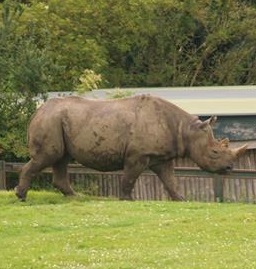
2. Occupational Health and Safety in Zoos
- Workplace Health & Safety
- Legislation
- Health & Safety Management in Zoos
- Zoonoses
- Legionnaires Disease
- Other Safety Issues
- Risk Management
3. Captive Animal Husbandry - Feeding Zoo Animals
- Animal Nutrition
- The Effect of Poor Nutrition on Animal Behaviour
- Water Requirements
- Essential Dietary Components
- Vitamins & Minerals
- Food Storage & Preparation
- Presentation of Food
4. Captive Animal Husbandry - Health
- Monitoring Health
- Maintaining Health
- Diseases
- Quarantine
- Record Keeping/Animal Transfer Data
- Enrichment Data Transfer Form
5. Captive Animal Husbandry - Reproduction
- The Need for Captive Breeding
- Captive Breeding in Zoos
- Goals of Captive Breeding
- Issues with Captive Breeding
- Inbreeding Risks
- Captive Breeding Programs
- Monitoring the Reproductive Status of Zoo Animals
- Assisted Reproduction
- Stud Books
- Birth Control and Separation
6. Captive Animal Husbandry - Behaviour and Enrichment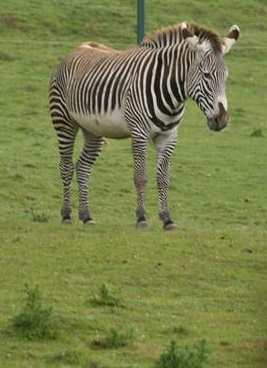
- Ethology
- Behaviour
- Types of Behaviour
- Behaviours in Captive Animals
- Learned Behaviour
- The Flight or Fight Response
- Animal Behaviours
- Animal Welfare Indicators
- Environmental Influence on Behaviour
- Behaviour Management
- Environmental Enrichment
7. Interacting with animals
- Zookeeper-Animal Interactions
- Visitor Animal Interactions
- Dealing with Dangerous Animals
- Flight Distance of Animals
- Handling Animals
- Visitor Animal Interactions
- Stress Reduction
8. Designing and Maintaining Enclosures
- Optimum Enclosure Design
- The Perfect Enclosure?
- Replicating Nature
- Providing Stimulating Environments
- Physical Enrichment
- Feeding Enrichment
- Sensory Enrichment
- Social Enrichment
9. Environmental Enrichment
- A problem based learning project to explore and learn about creating enriched environments for captive animals.
- You investigate a hypothetical primate (of your choice) has been with the zoo for over 3 years. It has recently moved to an enclosure with a smaller outdoor area but a larger social group. There are ropes and tree stumps available as enrichment. This animal has not been observed using the ropes or stumps.
- Over the past 12 months the animal has started displaying stereotypies such as rocking and self-aggressive behaviour. This stereotypical behaviour is gradually getting worse. He appears to be a subordinate in the group and keepers have recorded some gradual weight loss over the past 6 months. The keepers want to improve the wellbeing of this animal through a combination of physical, social, sensory and feeding enrichment strategies.
- The project involves working with a small team; Discussion; Researching Resources; working to Guidelines and a Final Report
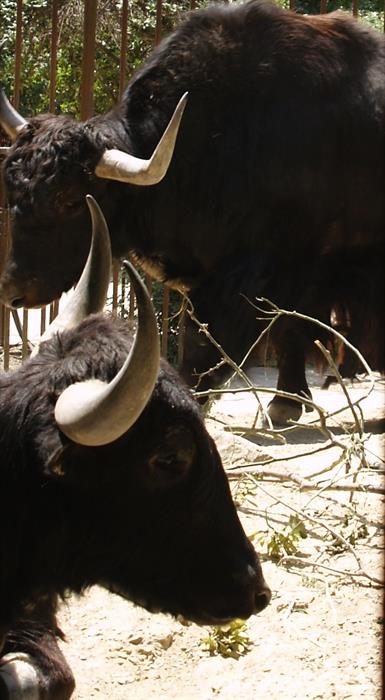
Course Aims
- Describe the nature and scope of zoos as a source of education and conservation
- Develop appropriate procedures for managing occupational health and safety in a zoo, with a view to minimising risk to staff, animals and visitors
- Describe the nutritional requirements and feeding preferences of animals within zoos
- Determine health management measures required for a range of different captive zoo animals
- Describe the management of breeding in zoos
- Determine appropriate ways to manage a range of different wild animals in zoos
- Explain procedures and techniques used to manage human-animal interactions in zoos
- Identify and describe the qualities of good enclosure design. Develop maintenance programs for different enclosures
HEALTH AND SAFETY MANAGEMENT IN ZOOS
Zoo organisations all over the world are expected to control health and safety within zoos as they would any other activities. The prevention of harm to employees and preservation of human resources are in the best interest of zoos as they are cost effective and reduce the chance of financial loss and liability. Most zoos are required to carry out risk assessments to employees, volunteers and other people who may be affected by zoo activities. Risks of injury or death must be controlled and if possible removed. Zoos may also be required under different legislation to assess the risks of hazardous substances and manual handling operations.
Training and Development
Most management regulations regarding employee health are quite specific in their expectations of the role of the employer. Zoo employers should not give work to employees that is beyond their capabilities or that may be hazardous to themselves or others. Assessing the capabilities of employees requires an understanding of their:
- Knowledge
- Training
- Experience
- Learning capability
Zoos are required to provide relevant information, instruction and training in health and safety procedures. These are generally given to new employees and again when employees are exposed to a new risk or a current risk increases. This may include:
- moving to another position within the zoo,
- provision of additional responsibilities
- changes in equipment or technology used
- introduction of new individuals or species to the zoo
- following a risk assessment or review of risk assessment
Information that should be given to employees regarding health and safety should generally include the organisation’s health and safety procedures and policies, reporting procedures, skill requirements for specific jobs, training for tasks, risk assessments, potential risks within the zoo, animal-related risks, training on working with new species, dealing with and reporting changes in animal behaviour, the proper use of work equipment, first aid procedures and fire and emergency procedures.
Important Notifications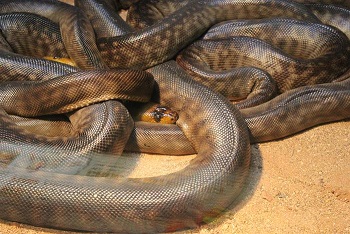
Zoo employers are expected to share information with employees that may effect their health and safety. This can include
- Accidents and work-related ill health of other employees
- Diseases – especially Zoonotic diseases (diseases that may be transmitted from animals to humans).
- Dangerous incidents – such as failure of diving equipment or wall collapses.
Work Health and Safety Practices
There are some general principles that can be applied to most zoo work places to ensure that employees, visitors and animals have a reduced exposure to risk of injury. These include:
- Ensure there are clear and concise safety guidelines and limits for each work task
- Provide supervision where necessary
- Allocate work according to the competency and relevant training of employees
- Regularly maintain equipment in a safe working condition
- Provide safe working areas and regularly assess and maintain these areas
- Consider the risks to the public visiting the zoo when assessing risks
- Provide special provisions to protect lone workers and those vulnerable to higher risk
Safety Issues in Zoos
There are many safety issues in zoos and these will also vary depending on the type of zoo and the wildlife present. The most common safety issues encountered in zoo environments include:
- Slipping – can be caused by poorly maintained surfaces, improper floor surfaces, presence of liquid substances on walkways and inappropriate footwear.
- Tripping – again poorly maintained paths or uneven surfaces, obstructions on surfaces, low walls or fences, poor lighting or visual distractions.
- Falling from height – this is more likely to occur to employees. For example, employees collecting leaf feed for koalas, those working in construction on enclosures and employees feeding from platforms.
- Vehicular Accidents – this is more of a risk in safari parks but can include vehicles colliding with staff or visitors, buildings or animals or vehicles overturning.
Personal Protective Equipment
Protective equipment can cover a wide range of items and accessories. The common aim of all these items is to provide some extra measure of safety against known workplace hazards. Some of the more frequently encountered workplace hazards include chemicals, electricity, dangerous machinery and equipment (saws, power tools), faulty machinery and sun exposure. The effectiveness of Personal Protective Equipment (PPE) is easily compromised by improper use, either intentional or not.
PPE includes a wide array of equipment for the head, body, arms and legs. These can include masks, goggles, gloves, waterproof aprons, steel-capped boots, gumboots as well as sunscreen, sunglasses and hats. When working with hazardous chemicals, respirators may also be required.
PPE is important for reducing the risk of zoonoses transmission and avoiding bites and scratches. Many activities that zoo keepers undertake require the use of personal protective equipment. These include:
- Cleaning enclosures
- Disposing of animal waste
- Assisting in the birthing process
- Carrying out veterinary exams (especially of the mouth and rectum)
- Handling samples (such as tissue and body fluids)
- Preparing feed (consisting of dead animals)
- Handling and moving dead animals
It is extremely important that PPE is kept in good working order and is always accessible, clean and ready to use. Zoo workers also need to be aware of the zoo’s WH&S standards and procedures in relation to the use of PPE.
There are various criteria that should be taken into account when selecting PPE for a specific task. These are generally outlined in the WH&S standards. PPE should:
- be appropriate for the type of work and provide adequate protection from risk of injury
- not create additional health or safety risks
- be compatible with other PPE being used
- fit properly
- not interfere with any medical conditions of the user
- be easy to use
- be comfortable
- comply with relevant national and/or international standards where it is used.
PPE needs to be stored in a way that ensures it is clean and fully operational. PPE needs to be checked regularly and should be easily accessible. To ensure maintenance of PPE, a maintenance program should be in place to identify and record:
- Maintenance duties and responsibilities
- Storage procedures
- Cleaning procedures
- Checking procedures
- Replacement criteria
Who should study this course?
- Volunteers at zoos, wildlife parks, animal shelters
- Anyone wanting to lay a foundation for a possible career working in zoos or wildlife parks
- Existing zoo staff who seek to improve their skills and career prospects
- Anyone considering more advanced studies who wants to lay a foundation and explore the possibilities before committing to more substantial studies (ie. sometimes it is wise to undertake a shorter course first, to gain an understanding of the subject. This can help you better decide what your next step should be; and when you take that step, it can make your prospects of success stronger).
Why Study with ACS?
Design your own learning pathway.
Study at your own pace, from anywhere, at any time.
Receive prompt, expert support from our team of committed and friendly tutors.
Your learning is our priority. We are flexible and adaptable to meet your educational needs!
Want advice on creating a learning pathway that suits your needs? Speak to one of our friendly staff for today!
Phone - International: +61 7 5562 1088 In Australia: 07 5562 1088
Email - admin@acs.edu.au or studentservices@acs.edu.au